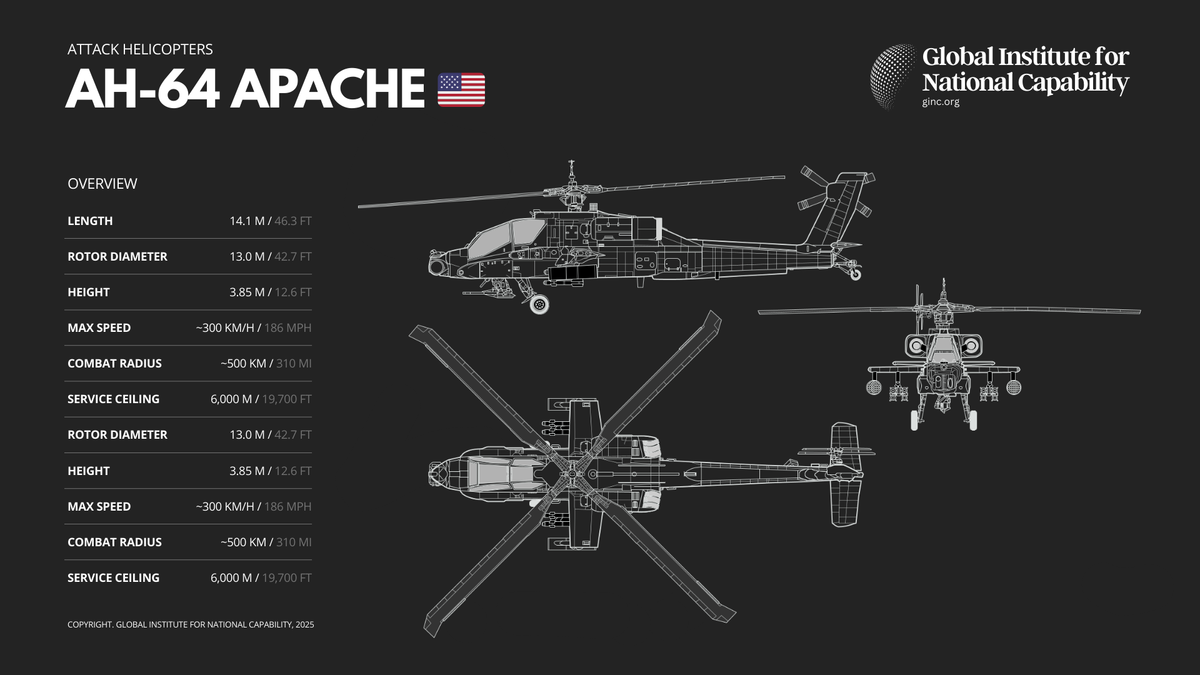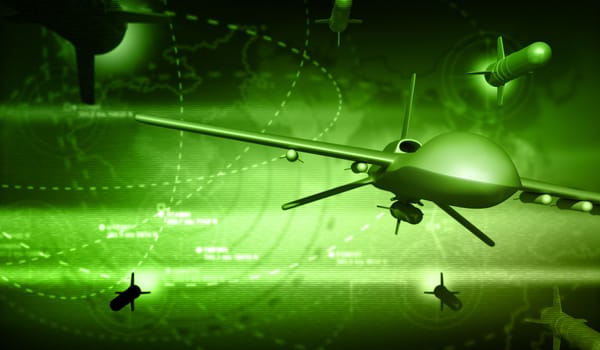AH-64 Apache 🇺🇸

The AH-64 Apache is the most battle-hardened and widely recognized attack helicopter in the world. Developed originally by Hughes Helicopters (now part of Boeing Defense), the Apache entered service with the U.S. Army in 1986 and has since become a critical pillar of rotary-wing firepower for more than a dozen allied nations. Designed to hunt tanks, escort troops, and dominate the battlefield under fire, the AH-64 is a symbol of tactical versatility, combat survivability, and relentless precision.
At its core, the Apache was built for frontline attack missions in hostile environments. Its defining feature is the tandem-seat cockpit, where a pilot in the rear and a gunner in the front work in seamless coordination. Above the rotor mast sits the AN/APG-78 Longbow radar — a dome-shaped fire control radar capable of detecting, classifying, and prioritizing up to 128 targets simultaneously in all weather, day or night.
The Apache’s main gun is a 30mm M230 Chain Gun mounted under the fuselage and slaved to the gunner’s helmet via the Integrated Helmet and Display Sighting System (IHADSS), allowing the gun to follow head movement for fast targeting. It also carries AGM-114 Hellfire missiles, Hydra 70 rockets, and can be outfitted with Stinger or Sidewinder air-to-air missiles, giving it versatility in anti-armor, suppression, and limited air combat roles.
The aircraft’s power comes from twin General Electric T700 turboshaft engines, giving it a top speed of over 280 km/h (174 mph) and excellent power-to-weight performance for takeoff and hover in hot-and-high environments. The Apache’s composite rotor blades and armored crew compartments are designed to survive hits from small arms fire and shrapnel, making it one of the most survivable attack helicopters ever built.
What sets the Apache apart is not just its firepower, but its integration with the networked battlefield. Modern variants like the AH-64E Guardian include data links that allow the aircraft to communicate with drones, ground forces, and other aircraft in real time. It can even control UAVs mid-mission, receiving live video feeds and designating targets beyond the pilot’s line of sight.
Combat-proven in conflicts from Operation Desert Storm to Afghanistan and Iraq, the Apache has repeatedly demonstrated its value in complex, contested environments. Its ability to loiter for long periods, deliver precision strikes, and support ground troops under fire makes it indispensable to modern combined arms operations.
Over 2,400 units have been built, and the platform continues to evolve. The latest AH-64E variant features upgraded engines, improved avionics, enhanced night vision, and full interoperability with unmanned systems, ensuring the Apache remains at the forefront of rotary-wing warfare into the 2040s.
In an era where drones and new technologies are reshaping combat, the AH-64 Apache stands firm as a battlefield multiplier — combining survivability, lethality, and adaptability in a package few adversaries dare challenge head-on.




